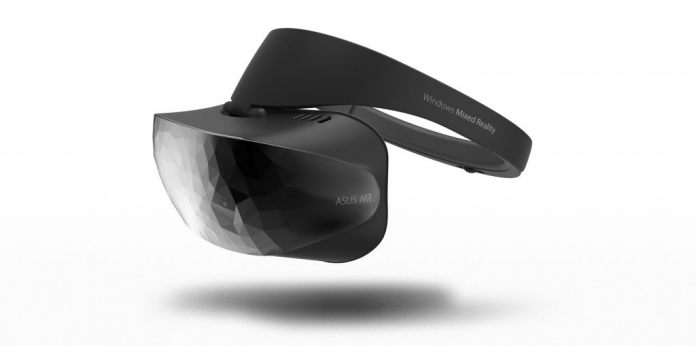The presentation built off Build 2017 earlier this month. At its developer conference, Microsoft discussed the upcoming availability of HP and Acer HMDs. Those Windows Mixed Reality dev kits are now available for pre-order. Joining the growing range of hardware HMDs are ASUS, Lenovo, and Dell. These are three long term hardware partners of Microsoft who are embracing the company’s vision of accessible virtual reality. At Computex, Microsoft explained when the devices will launch: “These headsets, coming to market this holiday, use Microsoft’s platform to enable a single and consistent user interface, standardized inputs, and a universal app platform for developers.” The ASUS HMD (main image above) is probably the most interesting of the new devices to look at. Microsoft correctly describes the design as “futuristic” and with its polygonal 3D cover panel, it stands out from other devices. As with other OEMs, ASUS worked directly with Microsoft to ensure the HMD is primed for Windows 10.
Lenovo has already made strides into mixed and virtual reality with its HMD announced at CES 2017 in January. The device presented by Microsoft is the same, featuring “built-in sensors to enable inside-out tracking and simplified set-up to let users move around more easily”. Dell also used CES 2017 to debut its mixed reality headset. However, Microsoft announced the device today and the accompanying image shows it has gone through a design tweak. Instead of the black front panel we viewed at CES, there is now an all-white aesthetic. However, Microsoft announced the device today and the accompanying image shows it has gone through a design tweak. Instead of the black front panel we viewed at CES, there is now an all-white aesthetic.
Microsoft says these three headsets will be available during the “holidays” but has not said how much they cost.
Windows Mixed Reality
The headsets are based on Microsoft’s Holographic Shell for Windows 10. Using mixed reality, the devices will marry aspects of HoloLens with VR products like Oculus Rift. For example, like HoloLens, users will be able to interact with 3D objects in a real environment. On the other hand, users can also interact with media (games, movies, apps) in a 3D environment, like Oculus Rift.






